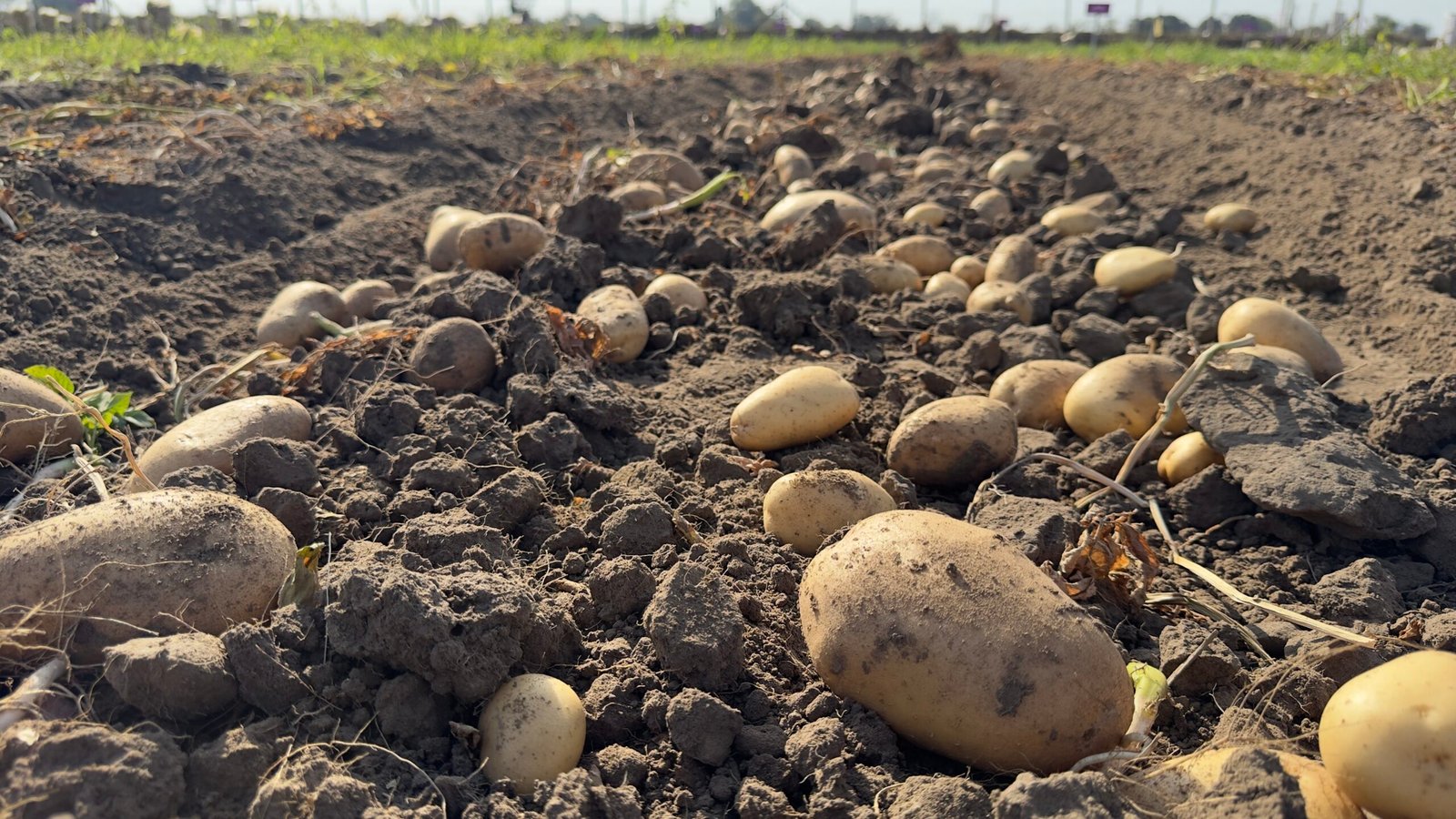Wednesday, 3 December 2025

Deteriorating soil health threatens Gujarat’s processing-grade potato hub. Rising salinity and alkalinity demand urgent action to safeguard future supply.
The land that once turned every potato seed into gold is now sending out silent signals seeking help. Across Gujarat’s famous potato belt, farmers have begun noticing a slow but worrying shift. Yields have dipped, the average tuber size has reduced and the once-known for uniform potatoes now show more variation in shape and quality. In processing units too, rejections are rising due to poor skin finish, uneven fry colour, and internal defects.
Beneath these visible signs, the real problem lies unseen — “in the soil”.
Soil scientists and agronomists in the region point to a combination of factors behind this decline. Continuous monocropping of potatoes, intensive irrigation and heavy dependence on chemical fertilizers. Over time, these practices have disturbed the natural balance of the soil, increasing alkalinity and reducing the presence of organic carbon and microbial activity that are essential for plant growth.
Understanding these challenges and with a view to tackle the problem head-on, HyFarm the agri-business unit of HyFun Foods, India’s largest processor of potatoes into French Fries and potato specialities has launched a “Soil Stewardship Drive” to assess and improve soil health in the state’s potato-growing districts.
Earlier this year, the company collected and analyzed more than 500 soil samples across 17 micro-pockets in North Gujarat. The study revealed that in many areas, soil pH levels had crossed 8.0 — significantly higher than the optimal range of 6.5 to 7.5 required for healthy potato crops.
Additionally, higher alkalinity affects the availability of vital nutrients such as phosphorus, zinc and iron for the crop. Farmers often try to compensate by adding more fertilizers, but much of it goes unused by the plants.
Based on the findings, HyFarm’s technical team is working with farmers to introduce small, manageable improvements rather than major overhauls. Farmers are being encouraged to use phosphoric acid or sulphur in measured doses to bring down pH levels and create a healthier root zone.
Rakesh Patel, a grower from Vijapur shared that after soil testing, he discovered high potash but low zinc levels in his field. “We changed the fertiliser plan and saw visible improvement in two weeks,” he added .
The analysis also revealed that organic carbon — often described as the ‘life energy’ of soil — has fallen below 0.3 percent in several locations. Without it, the soil loses its ability to retain water and nutrients. To rebuild this natural balance, experts are recommending the use of farmyard manure, compost, and crop rotation with green manure crops. Such measures not only enrich the soil but also help reduce fertiliser costs over time.
Another important intervention focuses on the type of potash used.
MOP (Muriate of Potash), which contains chloride, is being gradually replaced with SOP (Sulphate of Potash). SOP helps reduce salt accumulation and improves tuber appearance and fry colour — both crucial for the processing industry. Field trials have also demonstrated that calcium nitrate, when applied in three small doses during the growing period, strengthens the potato’s skin and reduces post-harvest losses.
S Soundararadjane, CEO, HyFarm, says, “HyFarm’s initiative is built around a simple principle, knowing the soil before sowing the seed. A regular health check-up keeps people healthy; a soil test does the same for farms. Once farmers understand what their soil really needs, they can use the correct and optimal inputs to better results.”
The “Soil Stewardship Drive” is still in its early phase, but its direction is clear — towards a more scientific, data-driven, soil-first approach to potato farming. The aim is to make soil testing as regular a part of cultivation as sowing itself, combining laboratory analysis with field demonstrations and digital tools for tracking results.
Global potato expert Engel Louwes, who has worked extensively in Gujarat, notes that such measures could help the region sustain its leadership in India’s processing-grade potato sector. He adds, “What’s happening now in Gujarat is a shift from reactive to informed farming. The recovery won’t happen overnight, but the commitment among farmers and HyFarm’s soil stewardship drive is promising.”
HyFarm’s “Soil Stewardship Drive” has a simple but powerful message – when farmers take care of their soil, the soil takes care of their harvest. And in Gujarat’s potato heartland, that connection is once again taking root — quietly, but firmly.